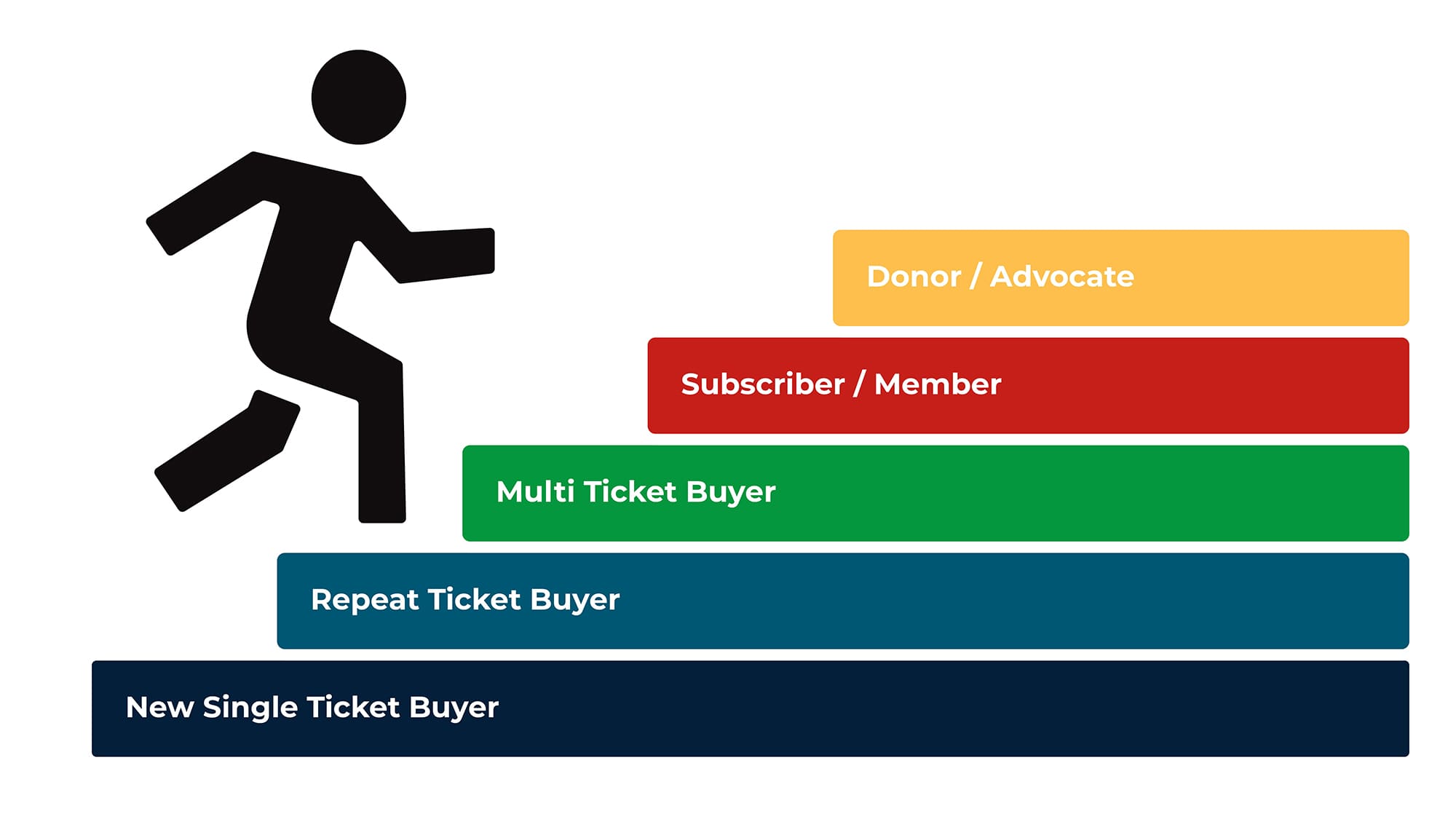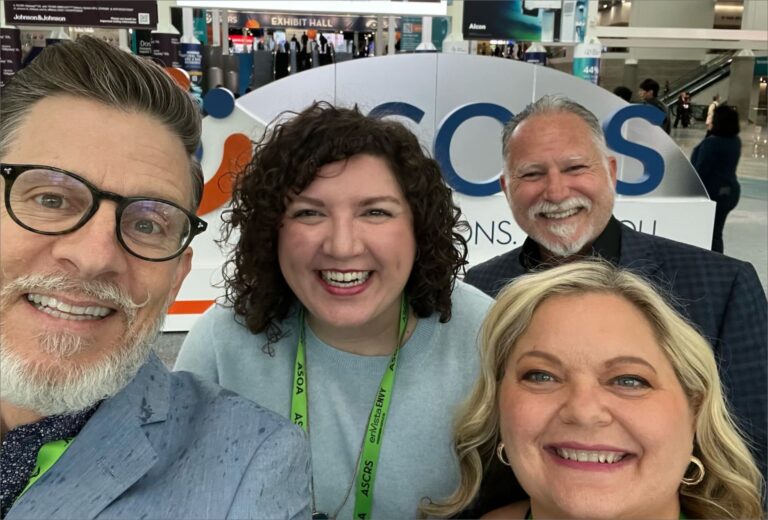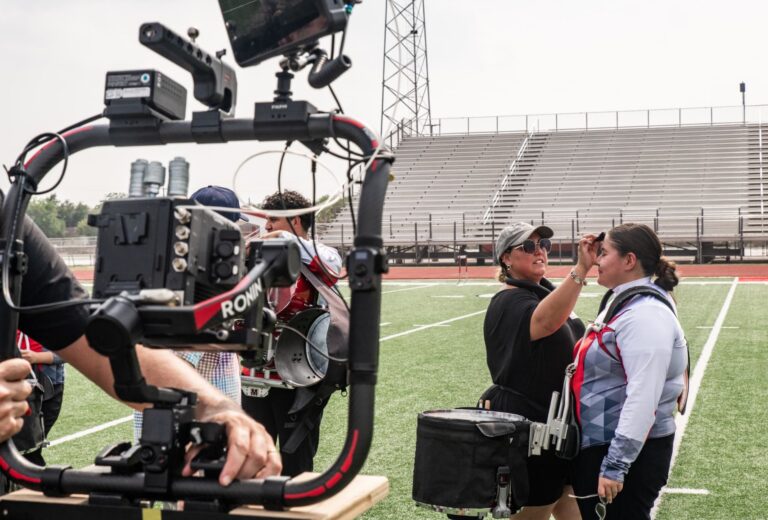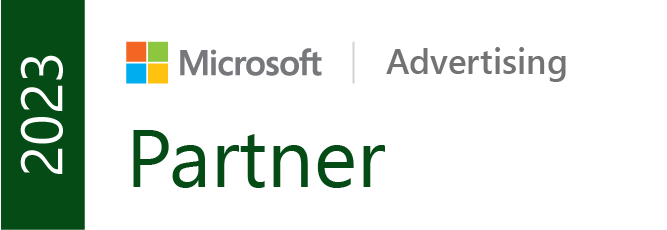So Susie visited your museum once. How do you get her to come back? Kevin has attended the theater once a year, every year. Why is he not a subscriber? The Smith family has been aquarium members for 6 years, but they’ve never donated a penny outside of that. Why not?
In the entertainment space, everything we do is about engaging with our customers and convincing them to come back. Not once, not twice, but regularly. And if you’re doing it really well, then your guests are also referring friends, family and colleagues, donating and serving on committees that help you support your mission. But how do you create a plan to guide individuals or families within your target market to become advocates? Get to know your audience at every point in their journey to understand their needs and meet them there. The following steps will help you turn guests into a dedicated fanbase.
Step 1: Create a Continuum
Understanding that not every customer is created equal, and each journey may look a little different, is crucial to improve your guests’ experience and help focus your efforts where they can generate the greatest impact.
Your target market may be vast. Explore looking at your audience with a linear mindset. Start with those who have never heard of or visited your space and frankly, aren’t too keen on doing so. Graduate to people who come around once in a while, primarily at the invitation of someone else. From there, focus on regular yet somewhat inconsistent attendees. Once someone is regularly visiting your venue, they may become a member or subscriber. Lastly, the tried and true, your donors and advocates.

Now let’s focus our efforts. Aligning your budget, energy and time to nurture relationships that have the strongest opportunity for impact is important. We recommend focusing on three key opportunities of growth:
- Single triers to regular buyers
- Repeat visitors to committed members
- Annual members to ongoing donors
Step 2: Define Your Audience Subsets
Look at each of these levels and put some definition to them. The better you know each group, the easier it is to build a plan to move them to the next step. Consider demographics, psychographics, geographies and ultimately, what motivates each group.

Take a look at the baseline for each group:
- What percentage of your revenue is supported by them?
- Where does your business have the most opportunity for growth?
- Are people who try once organically becoming regular attendees?
- Do you have trouble moving members into the donor category and why do you think that may be?
- What is the average lifetime value for an individual or household at each stage?
Understanding the potential value of each stage provides guidance and direction on what investments should be made to grow that group of people into the next stage.
For example, if your members have the highest revenue contributions, but you have significantly more multi-ticket buyers, there is a clear opportunity to focus efforts to navigate your buyers into members by developing personalized campaigns that focus on the benefits of membership based on what motivates them. A higher percentage of your time and budget can be justified in this space because the return potential is there.
Step 3: Invest in Growth
Convincing the decision maker of the household to invest more time and money with your organization involves building a strong relationship and providing value and other incentives to entice repeat purchases. Here are some opportunities you can explore with your various audiences to help move them along your continuum.
- Personalization
- Use purchase history and data to segment your audiences in a way to provide specialized recommendations for events, tickets and opportunities that match their interest. Capturing this data regularly is key to be able to use it to increase revenue.
- Exclusivity
- Host exclusive events or pre-sales for loyal customers. Provide value by making them feel special which in turn incentivizes them to purchase early and frequently.
- Offer a Loyalty or Referral Program
- Reward your customers for multiple purchases/visits or referring others to attend. You can provide benefits like exclusive access, free tickets, discounts and more!
- Ask for Feedback
- Engage directly with your purchasers. It will show that you value their input, and they will be more likely to engage more frequently. Plus, you learn and can improve!
- Create Urgency and Scarcity
- Occasional limited-time offers or promotions create a sense of urgency without devaluing your brand. This doesn’t have to be a steep discount but can be a limited ticket type for a special event or creating an additional early-bird ticket tier.
Building brand advocates takes time and effort, and it is most important to align your communication and marketing strategies with the positive experience your customers have when they visit. Focus on delivering personalized value and fostering relationships to increase the customer lifetime value.










